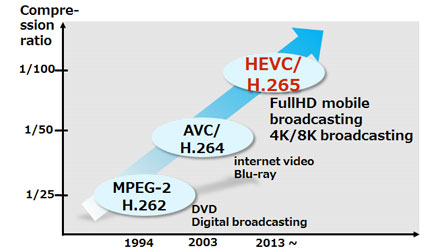


- #265 hevc to mp4 converter how to
- #265 hevc to mp4 converter install
- #265 hevc to mp4 converter drivers
- #265 hevc to mp4 converter full
Though you can choose a free online HEVC video converter to re-encode HEVC video, but most of them need to add additional plug-ins or are full of annoying commercial ads. Truly, there are all sorts of HEVC converters on the market. No.1 Fast MP4 to HEVC/H.265 Converter |Strongly Recommended And that's why this post is here, helping you decode any MP4 video to H.265 on Mac/Win in ultra fast speed and intact quality reserved. This can perfectly explain why so many people wanna encode MP4 videos to HEVC/H.265 codec. That is to say, you need more storage space to store MP4 (H264/MPEG-4) video. According to test, a video file encoded with H.264 is 1-3X larger than H.265. But, the new HEVC codec doubles the compression efficiency compared with H.264 and it can save 50% bit rate for the equal video quality. Other video codecs are less used.Īs is known to all, H.264 is superior to MPEG4 no matter in compression rate or image quality. The widely supported video codecs of MP4 are H.264 (MPEG-4 Part 10) and MPEG4. Common MP4 codecs include H.264, H.265/HEVC, MPEG4, MPEG-1, MPEG-2, VP8, VP9, MP3, AAC, PNG, JPEG and MPEG timed text.
#265 hevc to mp4 converter how to
The -hwaccel_device option can be used to specify the GPU to be used by the hwaccel in ffmpeg.What is MP4? How much do you know about MP4 video format or how to convert MP4 to HEVC? MP4 or MPEG-4 Part 14 is a container format which can be used to store video, audio and text. If ffmpeg was compiled with support for libnpp, it can be used to insert a GPU based scaler into the chain: ffmpeg -hwaccel_device 0 -hwaccel cuda -i input -vf scale_npp=-1:720 -c:v h264_nvenc -preset slow output.mkv Sample decode using CUVID: ffmpeg -c:v h264_cuvid -i input outputįull hardware transcode with NVDEC and NVENC: ffmpeg -hwaccel cuda -hwaccel_output_format cuda -i input -c:v h264_nvenc -preset slow output Sample decode using CUDA: ffmpeg -hwaccel cuda -i input output The note about missing ffnvcodec from NVENC applies for NVDEC as well. The full set of codecs being available only on Pascal hardware, which adds VP9 and 10 bit support. They differ in how frames are decoded and forwarded in memory. Note that FFmpeg offers both NVDEC and CUVID hwaccels. Codec support varies by hardware (see the GPU compatibility table). NVDEC offers decoders for H.264, HEVC, MJPEG, MPEG-1/2/4, VP8/VP9, VC-1. Note: If you get the No NVENC capable devices found error make sure you're encoding to a supported pixel format. You can see available presets, other options, and encoder info with ffmpeg -h encoder=h264_nvenc or ffmpeg -h encoder=hevc_nvenc. Usage example: ffmpeg -i input -c:v h264_nvenc -profile high444p -pixel_format yuv444p -preset default output.mp4 This means that running the following before compiling ffmpeg should suffice: git clone FFmpeg will look for its pkg-config file, called ffnvcodec.pc.
#265 hevc to mp4 converter install
It has a working Makefile with an install target: make install PREFIX=/usr. If you get an error from configure complaining about missing ffnvcodec, this project is what you need. Note: FFmpeg uses its own slightly modified runtime-loader for NVIDIA's CUDA/NVENC/NVDEC-related libraries.
#265 hevc to mp4 converter drivers
The NVIDIA Codec SDK or compiling FFmpeg with -enable-cuda-llvmįfmpeg configured with -enable-nvenc (default if the drivers are detected while configuring) Supported drivers for your operating system In order to enable it in FFmpeg you need:

FFmpeg supports NVENC through the h264_nvenc and hevc_nvenc encoders. NVENC can be used for H.264 and HEVC encoding. They can be used for encoding and decoding on Windows and Linux. NVENC and NVDEC are NVIDIA's hardware-accelerated encoding and decoding APIs. (yes, you can do both decoding and encoding with your nvidia graphics card) if you have more than one graphics card, you can change the number. This is what worked for me: (NVIDIA GTX 1650 SUPER) ffmpeg -hwaccel_device 0 -hwaccel cuda -i "input.mkv" -c:v h264_nvenc -preset slow "output.mp4"ĭevice is set to 0 because that is the first GPU in your computer.


 0 kommentar(er)
0 kommentar(er)
